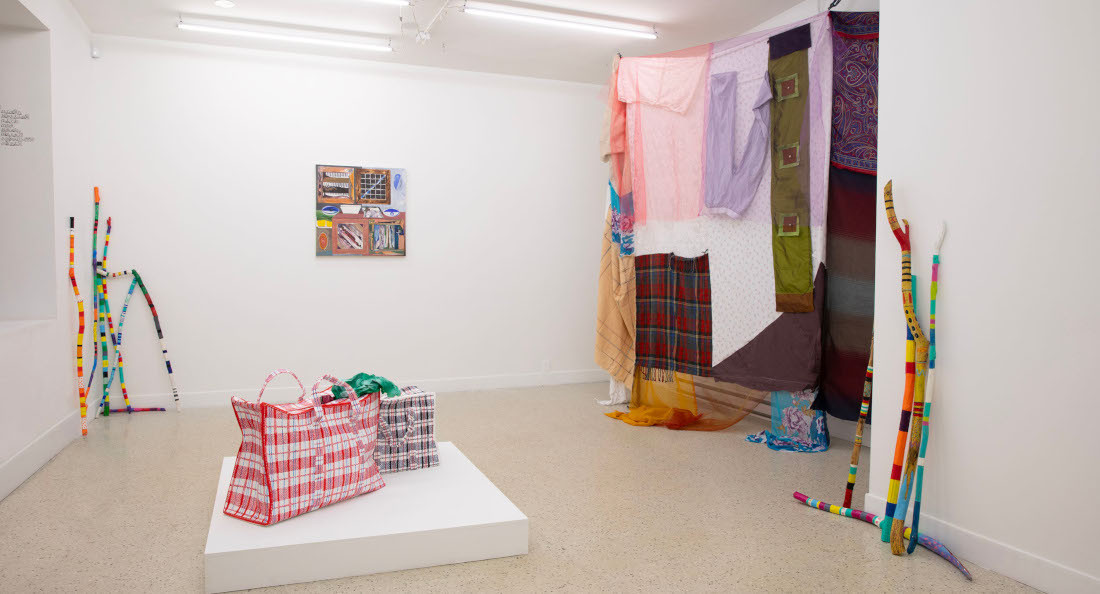C’cap rebrands with The Language Is In The Drifts
Centre for Cultural and Artistic Practice’s latest exhibition is ‘ambiguous’ by design
What happens when a curator unburdens a group of artists from a thesis?
Luther Konadu, director of the Centre for Cultural and Artistic Practices (C’cap) – formerly Blinkers Art and Project Space – attempts just that. In his latest exhibition, The Language is in the Drifts, he unconsciously channels Marshall McLuhan’s claim that “the medium is the message.”
Konadu took over Blinkers in 2021 and officially completed the rebrand under the name C’cap in late 2023.
“We wanted a name that transparently indicates who we are and had words people are generally familiar with,” Konadu says, “especially those who may not be in the arts. ”The exhibition features artists Craig Love, Mercedes Maduka, Ehidiamen Ojeaga, Shaylyn Plett, Janelle Tougas and Moneca Sinclaire, who all work predominantly in “material-based practices.” Here, Konadu encourages meaning to emerge organically through the materials themselves, rather than by forcing several artists and ethos to form one curatorial sausage.
“It originates from a thought-idea I refer to as ‘material ambiguities,’” Konadu says.
“There isn’t a conclusive thesis or prescribed modus operandi I abide by,” he says. Through the rebrand, Konadu wants to rethink the role of contemporary art centres and challenge old models.
“This loosens the possibilities of practices that can be programmed (and) allows unforeseen discoveries to emerge.”
In short, C’cap is not limited to any genre and keeps its parameters of “curation” open for surprise. Konadu believes Language is an exemplar of what C’cap strives to be.
This group exhibition is composed of works made primarily from repurposed materials. An ubiquitous bag, a wall hanging of clothing scraps, painted driftwood or paint itself, presents endless ideas: an unseemly thought-collage of mediums that are free to roam, commingle and find common threads that loosely pull together disparate identities and open up discussion.
In the basement of the venue, visual artists Plett and Tougas use the space itself as a substrate to carve a trompe l’oeil of Tyndall Stone walls. This, according to Konadu, “interprets the recognizable Tyndall Stone a lot of institutions use as their building material.”
The reference, according to the exhibition’s press release, serves to “collapse the visage of one art institution (like the Winnipeg Art Gallery) into the basement of another emerging one,” a visual nudge for observers to support the ambitions of emergent institutions living underfoot of their established predecessors.
Among the other material-based works like Sinclaire’s “Sticks,” Emeka-Maduka’s “Journey Mercies” and Ojeaga’s “Rack,” two text-based paintings by Love seem somewhat out of place.
“I guess the medium is the message,” Love says.
“Paint as paint, paint as language, language as paint, language in paint, painting language,” he says, musing about being the least material-focused artist in the exhibition.
“I’m not hiding anything. There are no surprises, nor am I exactly elevating anything,” Love says. “If they do seem out of place, I would think that quite funny ... like the most traditional thing in the show doesn’t fit. Who knows.”
For a gallery hesitant to impose a perspective onto its audience, “who knows” is a fitting reply.
“I keep my awareness open to artists and other cultural professionals attuned to the pressing social, political and cultural concerns of our times,” Konadu says. “Dance, theatre, music, poetry or anything else outside these parameters I’m yet to discover.”
The Language is in the Drifts is on display at C’cap (520 Hargrave St.) until Feb. 18.
Published in Volume 78, Number 13 of The Uniter (January 10, 2024)







